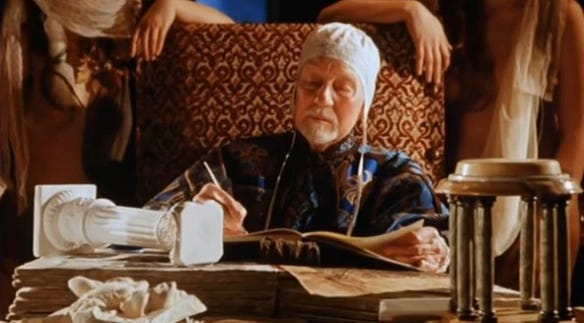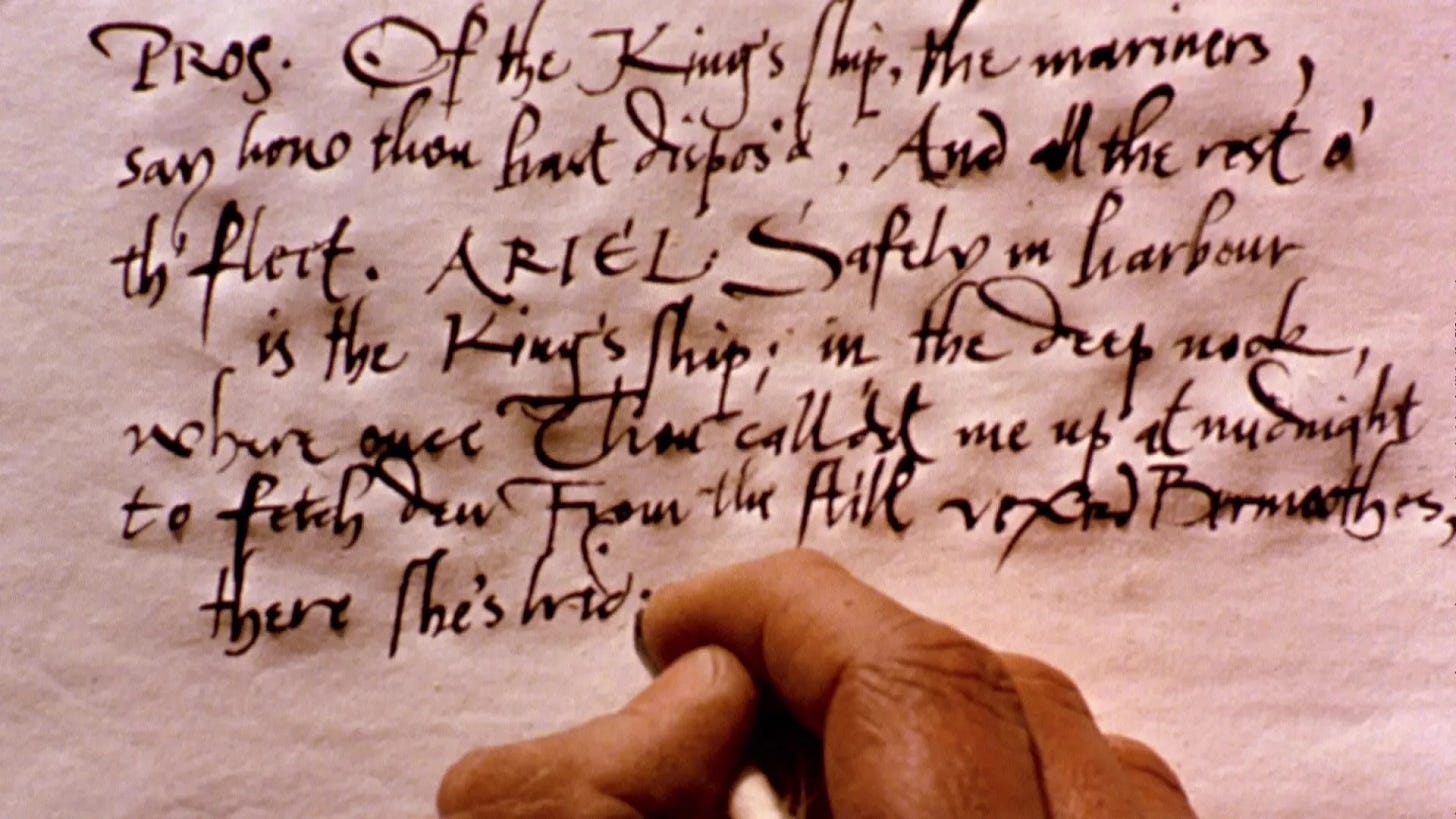Shakespeare and the Media: The Visual and Musical Alchemy of Greenaway's 'Prospero’s Books'
A Cinematic Essay on Peter Greenaway’s Vision of 'The Tempest'
Welcome to Vintage Cafe—a thoughtfully curated space for lovers of music, film, books, art, travel, and coffee. Each edition offers in-depth reviews, insightful explorations, and hidden gems you won’t find anywhere else. If you enjoy this content and want to support my work and independent writing, the best way is by taking a paid subscription. Your support unlocks exclusive content and keeps this space thriving.
April 23rd is marked around the world as World Book Day—a quiet celebration of stories, language, and the worlds they open up for us. The date was chosen in honor of two literary giants—Cervantes and Shakespeare—both of whom share this day as the date of their passing (and in Shakespeare’s case, also said to be his birthday).
Some years ago, back in college, I was given the task of writing an essay about Shakespeare and the media. The focus was Peter Greenaway’s Prospero’s Books—his richly imagined, visually layered take on The Tempest. On this day that celebrates literature, it feels fitting to revisit and share that piece here, with a few tweaks here and there.
Bringing Shakespeare to the screen is its own kind of art. It’s not just about translating the language of the stage to the language of cinema—it’s about finding new ways to make these centuries-old stories feel alive. Some film adaptations aim for authenticity, while others take bold, creative turns. Either way, they ask a timeless question: how do we keep Shakespeare’s spirit intact while speaking to today’s viewers?
Not everyone is convinced. There’s always the risk, some say, of losing the depth or drifting too far from what he intended. But I tend to think that the soul of Shakespeare isn’t confined to a single form. It lives in the emotions, the conflicts, the questions he raised about what it means to be human. If a film can capture that—even in a completely new language, setting, or style—then it’s doing something right.
Shakespeare’s The Tempest has been adapted countless times, but few interpretations are as visually striking and conceptually ambitious as Peter Greenaway’s Prospero’s Books (1991). Rather than a conventional film adaptation, Greenaway’s version is an intricate, painterly vision that reimagines The Tempest through layered imagery, elaborate set designs, and an almost overwhelming sensory experience. This film is not just an adaptation; it is a transformation, a visual and textual meditation on Shakespeare’s work.
Peter Greenaway was trained as a painter before becoming a filmmaker, and this background is evident in every frame of Prospero’s Books. Born in 1942 in Newport, Wales, he studied at Walthamstow College of Art and was initially drawn to the world of fine arts. His transition into filmmaking did not mean abandoning his painterly instincts; instead, he brought the techniques of composition, texture, and color into his cinematic language. Greenaway’s films often feel like moving paintings, with meticulously arranged imagery, rich symbolism, and an almost obsessive attention to detail.
In Prospero’s Books, Greenaway takes the radical approach of presenting all of the dialogue through a single actor, John Gielgud, who portrays Prospero. Rather than letting multiple actors interpret Shakespeare’s words, Gielgud’s voice dominates, reinforcing the idea that the entire story unfolds within Prospero’s mind. This choice gives the film a dreamlike, almost theatrical quality, as if the characters are figments of Prospero’s imagination rather than independent beings.
The film is structured around the idea of Prospero’s library—24 magical books that represent different facets of knowledge, imagination, and creativity. These books become the visual and thematic core of the film, each one revealing a new layer of meaning, blending text, animation, and live-action sequences. Greenaway uses this device to explore the act of storytelling itself, highlighting the power of language and imagery in shaping perception.
Greenaway does not simply translate The Tempest into film—he reinvents it through an elaborate, multi-layered aesthetic. The use of digital effects, which were groundbreaking at the time, allows for superimposed images, floating text, and ethereal compositions that give the film an almost otherworldly feel. The characters often appear in a tableau-like fashion, their movements choreographed to feel as much like an art installation as a narrative film.
Keep reading with a 7-day free trial
Subscribe to Vintage Cafe to keep reading this post and get 7 days of free access to the full post archives.









